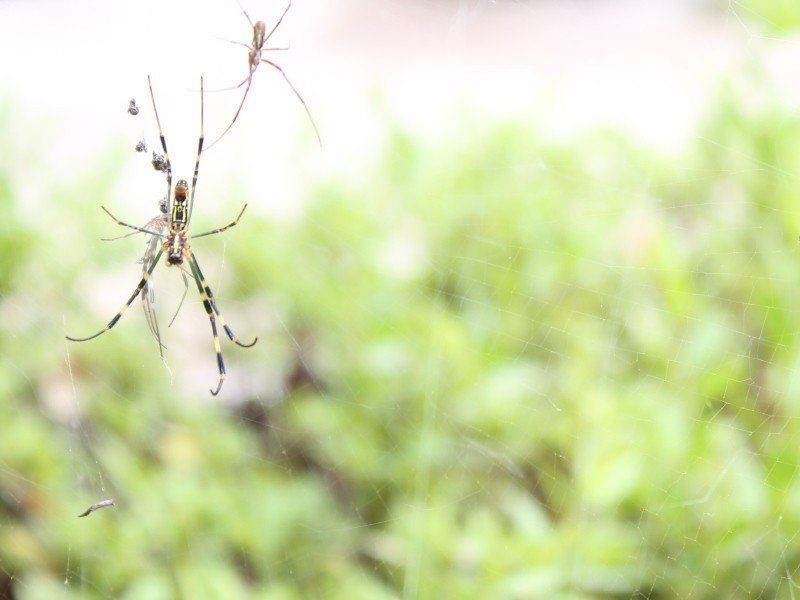Chances are you’ve seen webs from the large, bright Joro spiders, an invasive species of orb-weaving spiders that come from Japan. The first Joro spider in the United States was spotted in 2013 in Hoschton and they will continue to rapidly spread across the Eastern Seaboard, according to new research from the University of Georgia’s Odum School of Ecology.
Benjamin Frick is a co-author of the study and an undergraduate researcher from the University of Georgia’s Odum School of Ecology. He spoke on WDUN’s Newsroom about what the southeast can expect from these intimidating but mostly harmless spiders.
Frick and other researchers tested the arachnids’ cold tolerance to determine what other climates these arachnids can survive in. They compared the Joro spider to another orb-weaving spider, the Golden Silk, a species that shares similar characteristics with the Joro.
“We came up with the idea that the Joro spider has the potential to expand outside of the Southeast because they can survive any of the temperatures that we've put them under,” Frick said. “And so that means that they have free range to spread up the Eastern Seaboard or out west, just about as fast as people are willing to spread them.”
Once Joro spiders hatch from their egg sacs, they have the ability to travel several miles with a phenomenon called “balloon-ing.”
“These little baby Joros have a thread of leaf silk that they hang on to like a parachute,” Frick said. “The wind grabs that silk and uses it like a sail. And they basically spread through the wind to new places to build their webs. Spiders can spread a couple miles at most if they get picked up by a real good gust.”
According to Frick, many people are also unaware that Joro spiders can hitch rides on cars, pets or even clothes. This is why the spiders have been able to travel to states in the Midwest, like Oklahoma.
“It just sort of crosses state lines or goes with you on your vacation out west,” Frick said. “For every spider that we do see getting transported, there are at least 10 more that are getting transported without our knowledge.”
Joro spider season starts in April and May, and Frick expects to see the arachnids travel further north.
“We predict that they're already there,” Frick said. “We already saw some spread through Tennessee and into the lower parts of North Carolina. So it's not out of the realm of possibility to even maybe see some Joros up in Virginia this year.”
Although the spiders may appear threatening, Frick says people have nothing to be afraid of. He has handled hundreds of these creatures and claims he’s only been bitten five times.
“The only time that they are going to bite you is when you’re actually holding the spider in your hand and preventing it from moving,” Frick said. “But even if they did want to bite you, in most cases, their fangs are so small that they can't physically get through your skin – even if they wanted to.”
They are classified as an invasive species, which means they are non-native to Georgia. However, the Joro spiders have been preying on other invasive species, like the brown marmorated stink bug.
“That [marmorated stink bug] species has spread very rapidly across the entirety of the southeastern United States,” Frick said. “And we've got very good evidence that the Joro spiders are actively predating the brown marmorated stink bug which no other native species is able to do. So in effect, they are sort of acting as sort of a biological control for that species.”
Frick predicts that the Joro spider will become less of a nuisance as the arachnids adapt to human behavior.
“The spider doesn't like its web knocked down either,” Frick said. “So chances are if you move a spider enough times, it's going to get the hint and it's going to move away from that area.









